10gbps Wifi: Do You Wanna Go Fast?
Hello guys,
It seems like we just got AC Wi-Fi devices and yet that doesn't stop progress because we're already starting to hear about the next generation of Wi-Fi 802.11ax.
 [1]
[1]To give you an idea, the top speeds of AX will be around 10 gigabits per second, pretty crazy isn’t it? In this article, I want to really dive deep into some new features which are really technical although I will try to explain it in a way that is very easy to understand. I didn't even understand much of this stuff before I started reading into it but it's really not that complicated.
When can we expect this new AX generation of Wi-Fi?
It’s already here technically because ASUS has already released or announced an AX Wi-Fi router. However, the actual specification for AX is not going to be finalized probably until 2019, so it's probably gonna be a couple more years before we actually see any real number of devices that will support it.
A couple more basic things about AX is that it's going to use the same 2.4Ghz and 5Ghz, so nothing new there. It's gonna be focused on improving performance in Wi-Fi crowded areas, so a lot of times, interference can be an issue and this is going to help in situations like that.
Advantages of AX over AC
Starting with something called “MU MI-MO” (Multi-user Multi-input Multi-output) which AC does already have but it's improved in AX. MU MI-MO allows the router to connect to multiple devices at once using multiple signals or streams which would be assigned to different antennas.
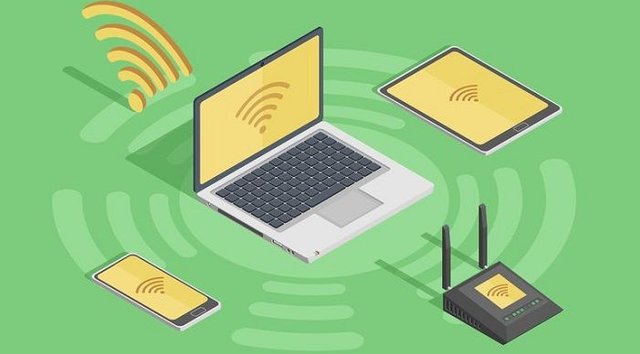 [2]
[2]This is really an improvement because without MU MI-MO where you would only be able to connect to one device at any given time, so you'd have to wait before connecting to some other device. It can only actually transmit to one thing.
AC has this feature but it only allowed one direction of MU MI-MO connection, so if you're the receiver such as the router, you can only connect to multiple devices to receive from but you can't necessarily send out connections in the other direction or the uplink direction.
With AX, it will support both uplink and downlink MU MI-MO which means that it'll be able to simultaneously send and receive from multiple devices in both directions.
The next feature called “OFDMA” is a real mouthful, it stands for (Orthogonal Frequency-Division Multiple Access). Sounds complicated right? Let me explain.
Currently, with AC and previous Wi-Fi versions, a router has to send a signal to one device at any given moment in time on all frequencies.
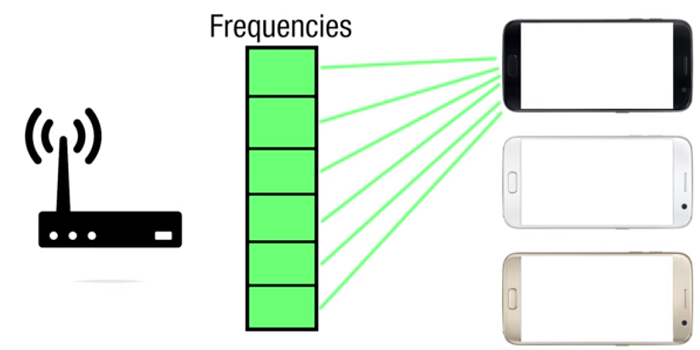
If it wants to send a signal, it will send a packet over all frequencies and then wait to move on to the next one unless there’re different streams.
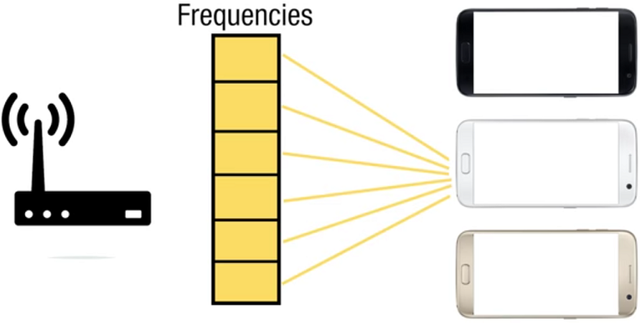
What if you didn't necessarily need to send a lot of data?
Sending on all frequencies is kind of overkill and you have to wait until the next microsecond to talk to another device. With this new OFDMA, you can split up the spectrum in a more sub parts, so you can talk to multiple devices with multiple frequencies at any given moment in time.
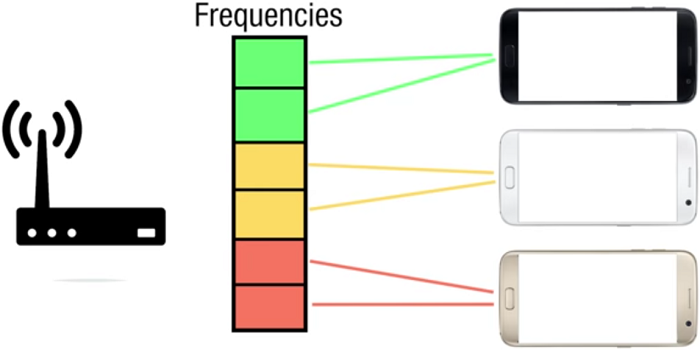
With OFDMA, you can talk to multiple devices anytime
This way obviously, you might be able to talk to a lot more devices that don't necessarily need to transmit as much data and you can use less frequency bandwidth but allow for more connections. Instead of talking to one device on all frequencies, you can talk to three devices on three subdivisions of the frequencies that are available.
Another cool feature for AX is called “Trigger Based Random Access”.
This is very technical, I will try to explain it the best I understand in a very simple way so you can understand it as well.
Routers currently work with something called “Time Frequency Resource Units” to schedule when devices are allowed to connect and send data to it. You can think of these units like appointments on a calendar, the router will talk to a device and say “ok you're allowed to talk to me and send your next piece of data at this time on this frequency and another device might be able to send it another time on a different frequency”
This just allows for efficient scheduling so the router knows when it's going to get its information and can process everything, so it's not getting bombarded.
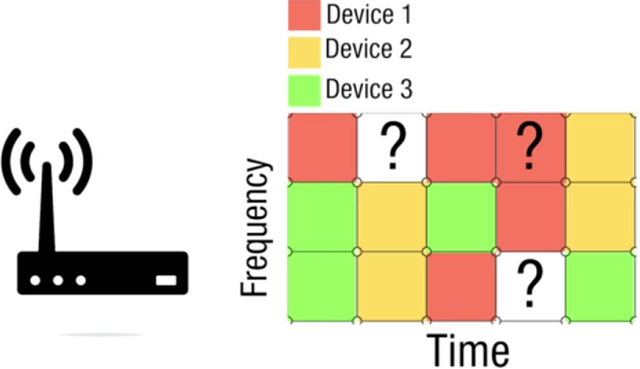
Connection schedule
With this new random access feature, it's the equivalent of leaving appointments open in your calendar, if a device needs to send data that isn't scheduled ahead of time, it will be able to access it if one of those extra blocks are available. That's why it's called random access, if a device wants to send data to something that wasn't planned.
Those are some of the main features that are improvements of AX over AC. Hopefully, I was able to explain these technical things in a way that you were able to understand. Do you really need such fast data transfer speed? Share your thoughts below and don’t forget to smash that upvote button.
References: 1 - 2 - 3 - 4 - 5
Image sources: 1 - 2 - 3 - 4 - 5 - 6


GIF made by @foundation
Thanks to @camzy for this amazing toon.


The rate at which technology is improving is really impressive. I really can't wait to get a hold of this one cos right now I'm being frustrated with what's on ground.
Me too, I cant wait.
@emenovic
I have known you to be a science and technology writer. You have been good at what you do and I want to applaud you for your consistency. Nicely written.
Thanks bro
This is beautiful
So painful my locality lack good science resources
Provides a very fast internet
Dope
Thanks
My pikin go enjoy this kind network for this village wey I dey
Lol... Don't be a man of little faith...
lol
Did you knew that the highes speed WLAN transaction that was made was 100Gbit/sec. The funny thing I saw the device today some our before reading this post. The thing is smaller then a USB-stick.
wow, fascinating!
Just learned of this new tech from your post, thanks for posting! What makes me wonder is how much bandwith is capable on the 5 ghz frequency? Also this tech would be great if it was able to penetrate walls just as well as 2.4 ghz, having fast internet access outside of a dwelling is just as important.